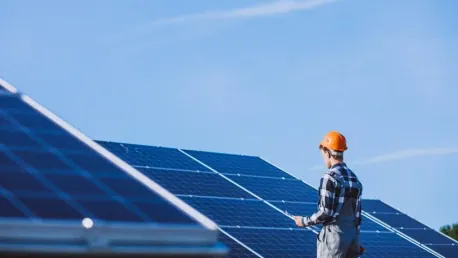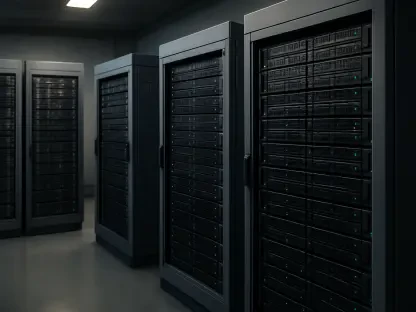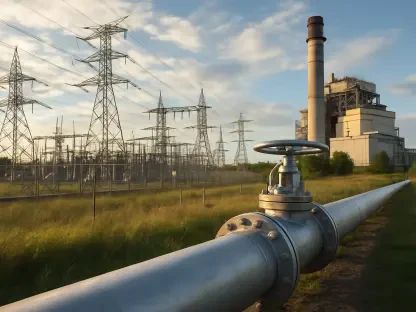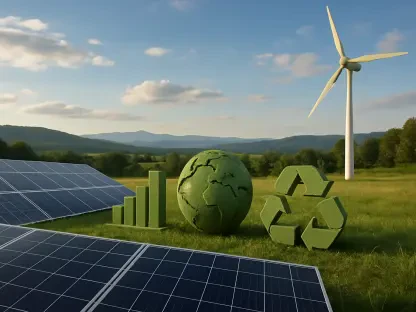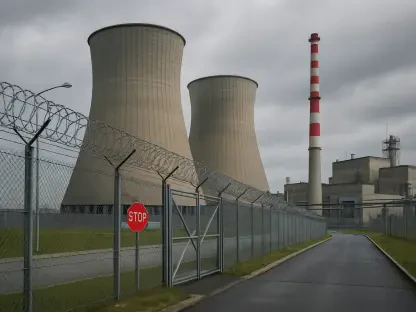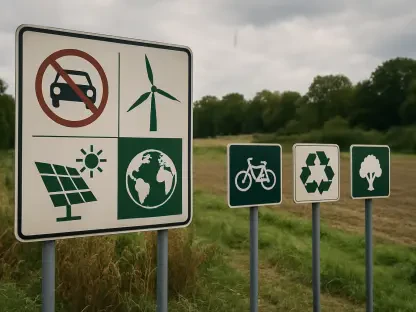The recent launch of a 5.5-megawatt (MW) solar farm in Rivesville, West Virginia, is a significant milestone in the state’s transition towards renewable energy. Situated on a brownfield site near a now-closed coal-burning power station, this project is a joint effort by Mon Power and Potomac Edison, both subsidiaries of FirstEnergy. The Rivesville solar farm is their second utility-scale solar initiative in West Virginia, following closely behind the 18.9-MW solar farm at the Fort Martin Power Station in Maidsville, which remains an operational coal plant. This new development signifies not just a shift in energy production but also an encouraging trend towards economic revitalization and environmental sustainability.
A Transformative Use of Brownfields
From Coal Ash to Solar Power: The Rivesville Site
The Rivesville solar farm is built on about 27 acres of an unused coal ash disposal landfill owned by FirstEnergy. Located along Morgan Ridge Road, this site has lain dormant since the Rivesville Power Station shut down in 2012. The choice of this location reflects a broader strategy to make productive use of brownfield sites, transforming areas once devoted to fossil fuels into hubs for renewable energy. By turning a former coal ash landfill into a solar farm, FirstEnergy demonstrates an innovative approach to land use while addressing environmental concerns associated with such sites.
The construction phase of the project was a boon for the local workforce, employing 63 local union workers. It also stimulated the domestic manufacturing sector, as the solar panels, racking system steel, and supporting electrical equipment used in the farm were all made in the United States. With nearly 14,000 solar panels now installed, the farm generates clean electricity capable of powering approximately 1,000 homes, contributing to a cleaner, more sustainable energy grid.
The significance of this project extends beyond energy production. By revitalizing a non-productive land area, the Rivesville solar farm sets a precedent for similar initiatives. It shows how former industrial sites can be repurposed to support modern energy needs without further degrading the environment. The project also underscores the importance of local employment and domestic manufacturing in driving economic growth within communities undergoing transition from traditional industries.
Local Benefits and Broader Impacts
Dan Rossero, the vice president of FirstEnergy’s West Virginia Generation, has emphasized the dual benefits of the solar projects: job creation and economic growth. Indeed, the Rivesville solar farm exemplifies how renewable energy initiatives can deliver immediate economic benefits while laying the groundwork for long-term sustainability. Mon Power serves approximately 395,000 customers across 34 counties in West Virginia, and Potomac Edison serves nearly 440,000 customers in both Maryland and West Virginia. The project underlines a broader commitment by these utilities to meet the energy demands of their customers through increasingly sustainable means.
The local job creation during the construction phase is just one aspect of the economic impact. The long-term operational needs of these solar farms will also create sustainable employment opportunities, not just for maintenance and management but also in secondary sectors such as manufacturing and supply chains. This represents a considerable shift in economic dynamics for regions historically dependent on coal.
Future Solar Projects on the Horizon
Expanding Renewable Capacity
Building on the momentum generated by the Rivesville and Fort Martin projects, Mon Power and Potomac Edison are already planning their next solar venture: a 5.75-MW farm in Berkeley County. Additionally, they have three more solar farms in various stages of planning. This accelerated pace of development is indicative of the companies’ commitment to renewable energy, bolstered by a 2020 law in West Virginia that allows electric utilities to develop up to 200 MW of solar power on brownfield sites. This legislation aims to address the state’s energy needs while fostering economic growth, as businesses increasingly prioritize renewable energy sources in their operational models.
The planned projects include an 11.5-MW solar farm in Davis, Tucker County, and an 8.4-MW farm in Weirton, Hancock County. For these projects to proceed, the companies must secure final approval from the Public Service Commission of West Virginia once 85% of renewable energy credits from these projects are committed. Together, these five projects will generate over 87,000 solar renewable energy credits (SRECs), representing the environmental benefits of solar power. These credits can be sold or traded, potentially bringing additional revenue streams to support further renewable energy investments.
Overcoming Historical Dependencies
The recent unveiling of a 5.5-megawatt (MW) solar farm in Rivesville, West Virginia, marks a notable advancement in the state’s shift towards renewable energy. This project, located on a brownfield site near a former coal-burning power station, is a collaborative effort by Mon Power and Potomac Edison, both under FirstEnergy’s umbrella. The Rivesville solar farm is the second large-scale solar initiative spearheaded by these companies in West Virginia. It follows the 18.9-MW solar farm at the Fort Martin Power Station in Maidsville, which still operates as a coal plant. This new solar endeavor represents more than just a change in energy sources; it’s an encouraging sign of economic renewal and sustainability. The transition to renewable energy sources like this solar farm not only helps in reducing carbon footprints but also revives local economies by creating jobs and repurposing land that was once environmentally damaging. It’s a clear indicator of how the state is adapting to modern energy needs while fostering a more sustainable and prosperous future.
